The views expressed in our content reflect individual perspectives and do not represent the authoritative views of the Baha'i Faith.
On a summer day in 1919, Eugene Williams, a 17-year-old Black boy, did what thousands of his fellow Chicago residents did to escape the heat: He went for a swim in Lake Michigan’s cool waters. Eugene headed to 31st Street Beach, where, due to racial segregation, Black people were allowed to enjoy the lakeshore. But as the waves washed over Eugene, they also carried him north. Eugene crossed an invisible barrier between the “white” and “Black” side of the water at 29th Street — a white-only beach. A white man spotted him in the water, and stoned him to death, causing Eugene to drown. When the police arrived on the scene, they refused to arrest the white man.
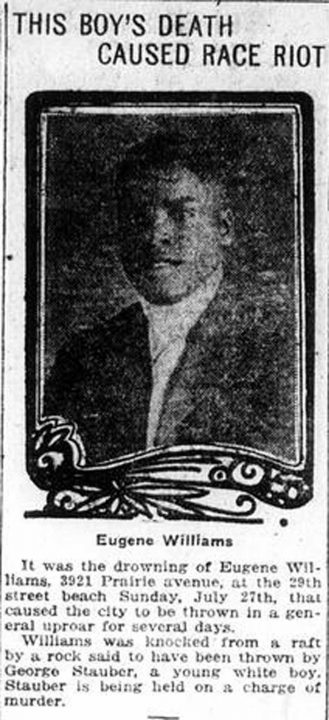
Violence erupted between white and Black people on the scene, and it quickly spread throughout the city’s South Side. From July 27 to August 3, residences and businesses burned, 1,000 black families became homeless, more than 500 people were injured, and 38 people — 23 Black and 15 white — died during what we now call the Chicago Race Riot of 1919.
As a woman of Iranian descent living on the South Side, every day I walk the same streets where Chicagoans lost their lives due to racial violence 101 years ago — and where the 800,000 current Black residents of the city continue to suffer the consequences of racism.
Baha’u’llah, the prophet and founder of the Baha’i Faith, wrote that “No light can compare with the light of justice. The establishment of order in the world and the tranquillity of the nations depend upon it.” If the only way we can bring about justice and move forward is by knowing our history, then I make it my business to investigate the truth about the past of the city I’ve called home since 1978. I make it my business to acknowledge the harm done and actively play my part in addressing this most vital and challenging issue in my backyard.
I serve on the board of Organic Oneness, a Chicago-based Baha’i-inspired nonprofit that promotes the interconnectedness of all the people and the earth. We work to continue and magnify efforts to heal the community, and so on July 25, I had the honor of helping with our 2nd Annual Bike Tour by registering and handing out water to 200 mask-wearing riders. They cycled across the South Side, commemorating the sites where people died, and hearing from community activists and experts about how the effects of the riots still play out today.
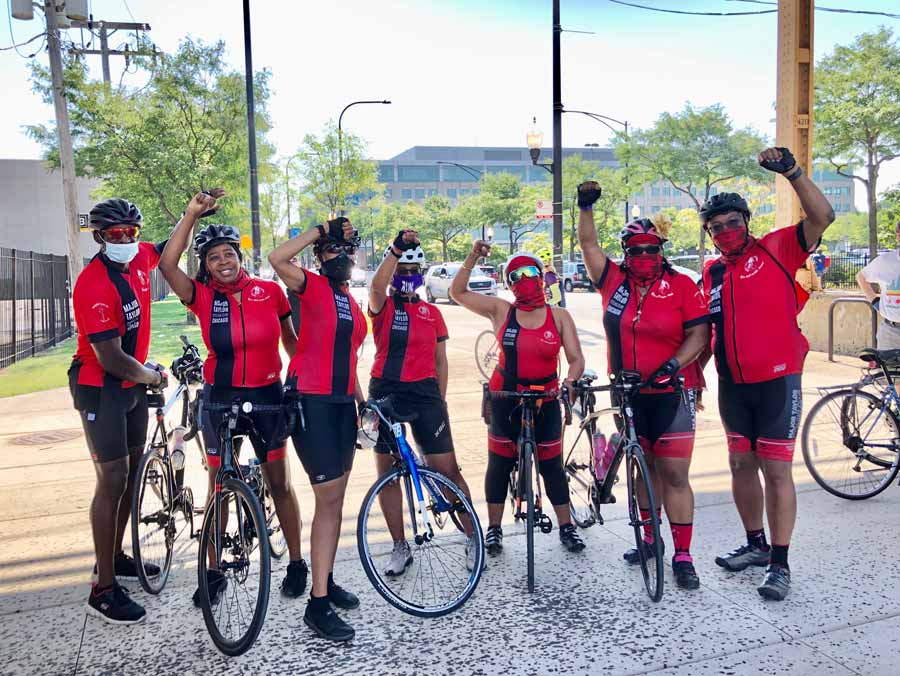
The bike tour caused me to reflect on a question I regularly ask myself: What does it look like to put my belief in the Baha’i principles of the elimination of the extremes of wealth and poverty, the independent investigation of the truth, and the oneness of humanity into action to bring about justice in my neighborhood and city?
“The first step is recognition and telling the truth. History has shown that when you acknowledge the harm that has been caused, then you begin the path to reconciliation and that is essential for healing,” says my fellow Organic Oneness board member and friend, Dr. Franklin Cosey-Gay. Franklin’s also executive director of The Center for Youth Violence Prevention, and co-director with Dr. Peter Cole of the Chicago Race Riot of 1919 Commemoration Project (CRR19), which is co-creating spaces to heal from the past.
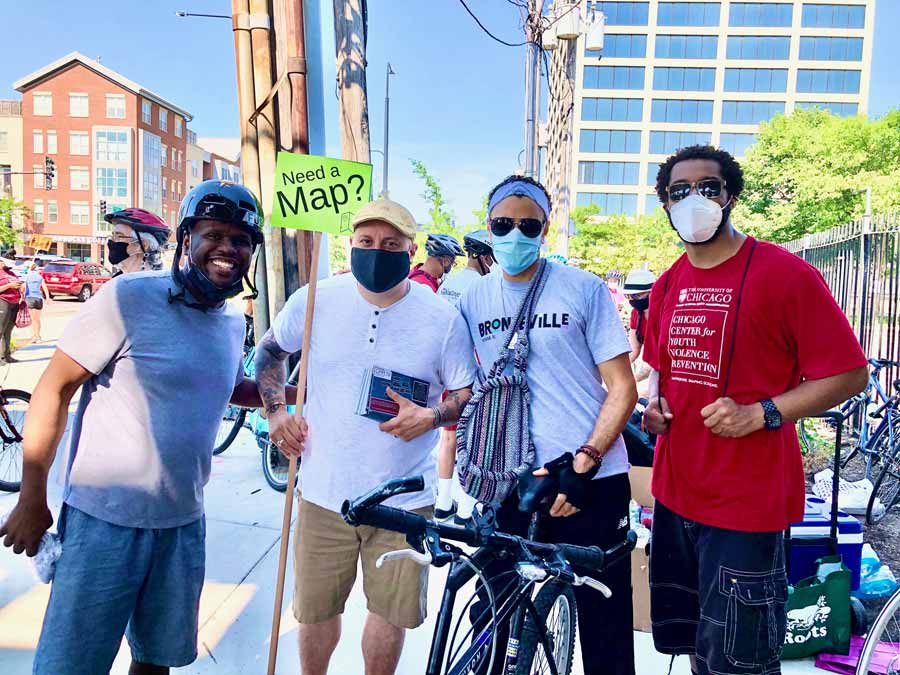
The CRR19’s mission is to help Chicago work toward racial justice through public art and the installation of 38 artistic markers at the exact spot where each person was killed in the nearly forgotten “Red Summer’’ 1919 race riots. This idea came from Peter stumbling upon Stolpersteine — markers created by German artist Gunter Demnig that are each inscribed with the name, date of birth, and death of victims of Nazi extermination or persecution — while living in Berlin in the summer of 2016. Peter, Franklin tells me, realized we needed a comparable project to Stolpersteine in order to address America’s amnesia about racism.
Abdu’l-Baha, the eldest son and the designated successor of Baha’u’llah, the prophet and founder of the Baha’i Faith, said “Truthfulness is the foundation of all human virtues. Without truthfulness progress and success, in all the worlds of God, are impossible for any soul. When this holy attribute is established in man, all the divine qualities will also be acquired.”
Very few people know that the Statue of Liberty was originally designed to commemorate the end of slavery on June 19, 1865. We don’t know that slave owners were paid reparations for financial loss after emancipation, while enslaved blacks got nothing. We don’t know that there’s a $4 billion wealth gap that was created between whites and blacks in this country as a result of systemic racism in the housing market. This “historic amnesia,” as Franklin calls it, about Chicago’s ugly past of racism and violence continues to perpetuate the oppression and destruction of Black lives and the communities in which they live.
Bronzeville, the neighborhood in which the Chicago Race Riot of 1919 started, is the epicenter of Black history in Chicago. Today it marks the dividing line between predominantly Black neighborhoods to the south and white neighborhoods to the north. How did the city become so segregated? What will it take for integration to become a reality? How can this city repair from the physical and structural violence that plagues Black people in the city?

Two critical events occurred that led up to the 1919 riots: the Great Migration of Black people escaping the terrorism of the deep South and the return of white World War I veterans who were competing with Black workers for jobs in factories, warehouses, and mills.
In the aftermath of the riots in 1919, city officials organized a Chicago Commission on Race Relations. Along with 11 other members, they appointed Robert S. Abbott, a Black Baha’i who, in 1905, founded one of the most prominent African American newspapers in the United States, The Chicago Defender. This commission looked into the root causes of the riots and found ways to combat them. However, the recommendations from the report were ignored. Instead, racist zoning laws, restrictive covenants, redlining, and urban renewal became the new reality, expanding the economic disparity between the rich (white) and poor (Black).
During that time of unrest in 1919, Dr. Zia Bagdadí, a Baha’i of Iranian descent, lived in Bronzeville during the riots and provided those who were impacted with food and medicine as his path of service. I can’t help but draw the parallels between his actions and how I should respond in Bronzeville after the recent uprisings in America after the killing of George Floyd. I also wonder where America would be today if people had followed the guidance and principles of truthfulness and equal justice.
In a speech he gave in Paris in 1911, Abdu’l-Baha advised that: “The government of the countries should conform to the Divine Law which gives equal justice to all. This is the only way in which the deplorable superfluity of great wealth and miserable, demoralizing, degrading poverty can be abolished.”
Imagine what Chicago — what the United States — would be like today if white civilians and government officials, bankers, and law enforcement had accepted Black people as equals when slavery ended in 1865. Imagine how much progress this nation would have made if white supremacists had learned about the concept of the oneness of humanity.
Abdu’l-Baha visited the United States in 1912 and called Chicago the heart of the American nation. During his time in the United States, he spoke directly about the urgency of working to bring about race unity. “Until these prejudices are entirely removed from the people of the world,” he wrote, “the realm of humanity will not find rest. Nay, rather, discord and bloodshed will be increased day by day, and the foundation of the prosperity of the world of man will be destroyed.”
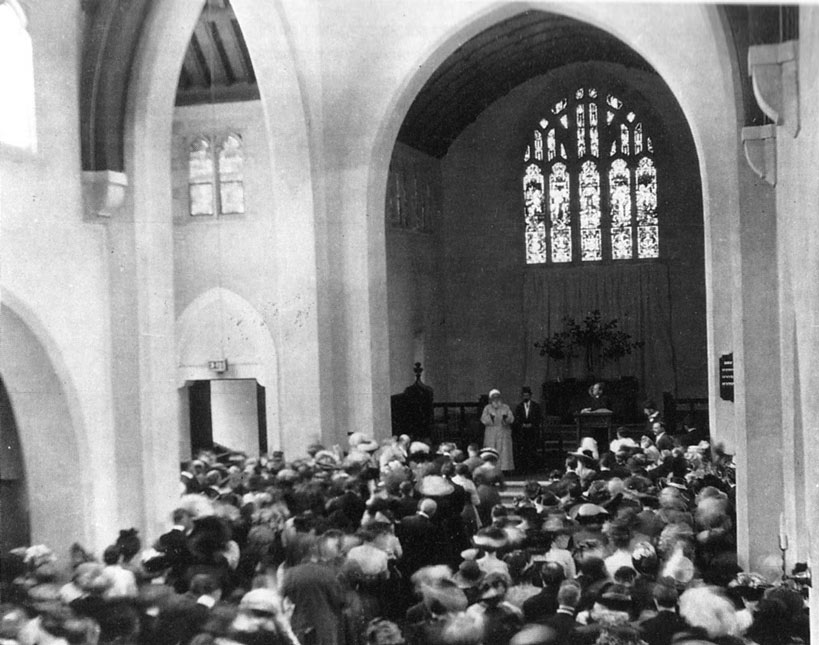
And, continued Abdu’l-Baha, if we do not take action to bring about justice and unity, “there is a greater danger than only the shedding of blood. It is the destruction of America.”
When elected officials, community members, institutions, and organizations work together and have a common understanding, we can move forward towards unity faster. This takes being engaged in community activities, listening to one another, serving together, and finding solutions with everyone’s voices at the table.
Along with installing public art at the locations where the 38 people were killed during the riot, the CRR19 plans to commemorate the centennial of the 1921 Tulsa Race Riot with a bike ride from Tulsa to Chicago. They also hope to continue collaborating with community partners like Organic Oneness and other Bronzeville-based organizations. Working together, we can raise awareness in schools about the history of the riots, provide tours of impacted areas — like the annual bike tour — and research the 1919 Chicago Race Riot’s victims.
I look forward to being a part of ensuring this five-fold initiative successfully unfolds. I want to be part of every step until history has been corrected and we have healed from racism as a city. I owe that to Eugene Williams.





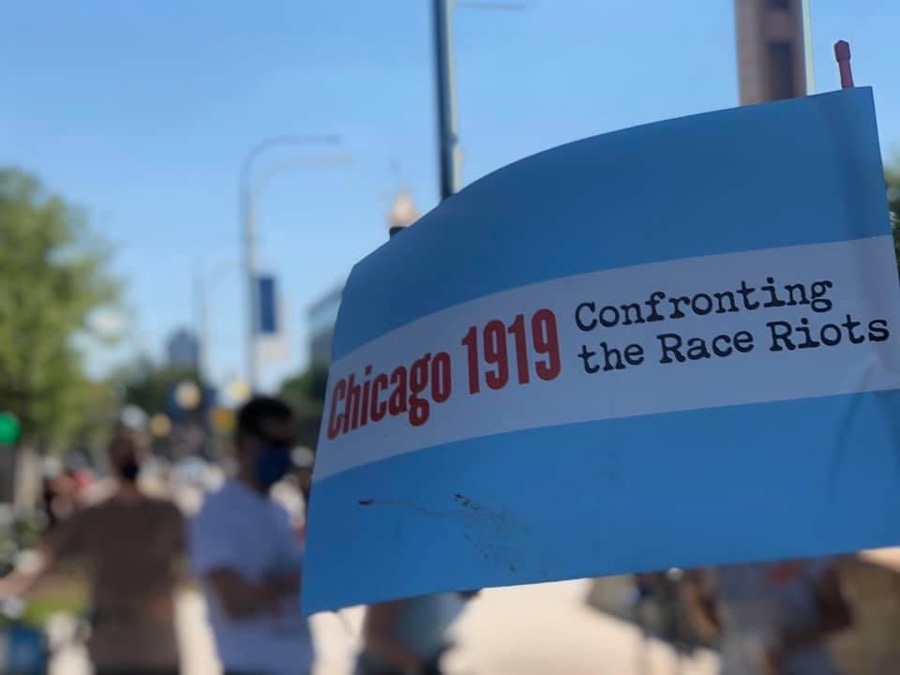













Comments
Sign in or create an account
Continue with Facebookor